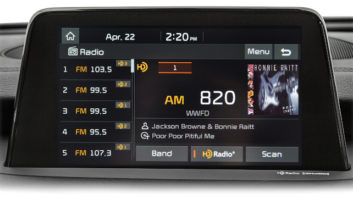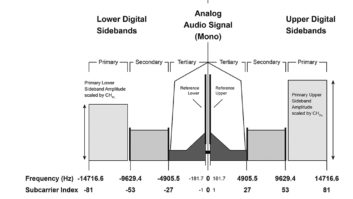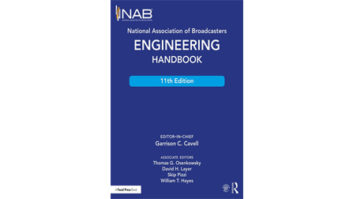Alternatives to AM IBOC
Dec 1, 2005 12:00 PM
The following is a response to a letter that was printed in Reader Feedback in the October issue. That letter commented on the lack of availability of HD Radio receivers and lack of public understanding of HD Radio.
Dead system walking
I would like to respond to Bill Sutton, chief engineer-IT, with Clear Channel in Bryan-College Station, TX. Mr. Sutton, you don’t have to worry about IBOC becoming the next AM stereo. It already is.
Let’s see. A station has to rent IBOC for a lot of money. It splatters the spectrum messing up EAS. Nobody is going to buy the receivers. Nobody, except you and your friends. I had a chance to get one for free. I turned it down. Why? It wasn’t heavy enough to be used as a boat anchor.
As I tell the good folks listening, do you want broadcasting to work as well as your cell phone? I know one person who would say yes, but then I find out that he still uses a bag phone like I do. Digital does not work well for transmission. When I see a digital system worth endorsing, I will do so; for free. I haven’t seen it yet.
The folks listening aren’t stupid. In fact they are starting see that it may be time to decommission the FCC and move its services over to the Federal Trade Commission (FTC). When they see silliness like this going on, they know the FCC is not looking out after the public’s welfare.
Scott Boehme
The Society for Accurate
Information and Distribution Foundation
[email protected]
Alternative approach to AM IBOC
Idea for AM OBOC2 and/or AM EV-DO
Larry Ray’s idea on how to use the existing AM band as redirect to an FM multicast station….
I am a retired telecom guy and SBE member. I presented an idea to CBE Chapter 49 (Quincy, IL) for statistical multiplexing of AM audio and low-speed data so an HD Radio receiver could be directed to tune to an HD Radio FM multicast or broadband wireless. As far as I can tell, even AM C-QUAM stereo would be compatible with this idea. Anyone interested in the idea can run with it.
Larry Ray
Springfield, IL
Note: You can read a synopsis of Larry’s idea by accessing this article online at beradio.com. Click on Reader Feedback in the December 2005 issue.
Doherty memories
Dear John,
I enjoyed reading your recent discussion of the Doherty amplifier in the September 2005 issue. My father was a field engineer for the old Western Electric broadcast division and spent many hours on the care and feeding of Doherty amps. When he was done with his setup, he would often loosen the set screws on the tuning shafts (with the chief engineer’s knowledge, of course) to circumvent the �fiddling syndrome� on the part of the operators than you mentioned in your article.
W. Louis Brown, PE
sales engineer
FPDI
Ask Radio magazine
I have noticed that when I rip music from a CD and trim the beginning and ending that I sometimes hear a pop when the audio file begins or ends. Do you have any ideas on why this happens, and more importantly, what I can do to eliminate it?
name withheld by request
The most likely cause is that the audio at the start or end is not completely silent (digital zero). Because this is a ripped file, hypersonic audio is not likely because of the low-pass filtering of the digital sampling. There is probably some low-frequency rumble present. You can’t hear it, but you may be able to see it on a waveform display.
By applying a fade-in or fade-out level change to the ends of the file you can eliminate the pop of the noise when it starts. I apply a fade-in level change that starts at zero and curves to the 100 percent level in a gradual fashion at the beginning and end, but rapidly in the middle. The fade-out curve is the same with the opposite effect.
� Chriss Scherer, editor
comments?
[email protected]











